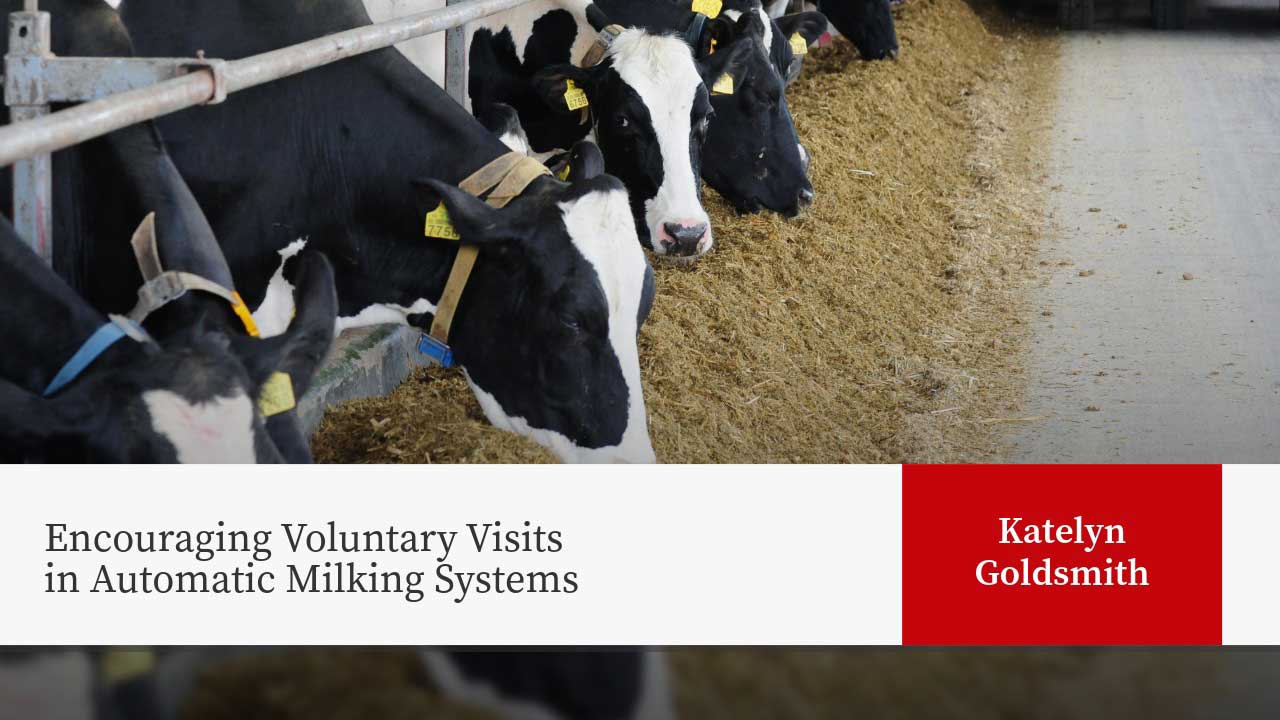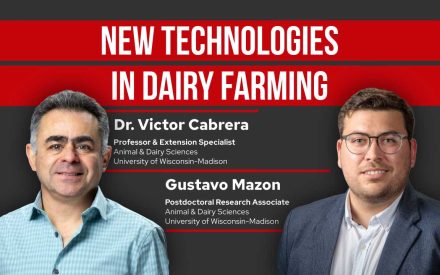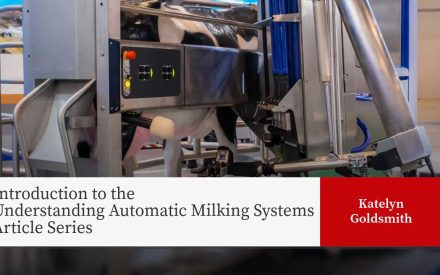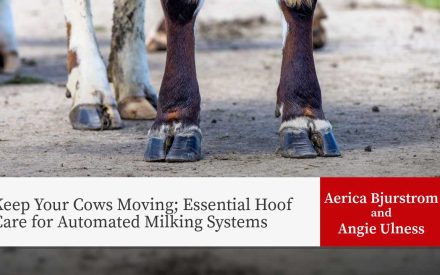
Introduction
What makes Automatic Milking Systems (AMS) 🔍 different from conventional systems is that cows bring themselves to the robot to be milked. While this allows for greater flexibility in managing tasks and cow routines, it also introduces a new management challenge: fetch cows 🔍.
When cows do not voluntarily visit the robot as expected, both cow performance and AMS efficiency can decline. Additionally, finding and fetching these cows takes time and labor. In this article, we’ll explore what influences cow visits to the robot and how to troubleshoot when the fetch cow list gets too long.
Defining Fetch Cows
“Fetch cows” (also called “collect cows” or “overdue cows”) are animals that need to be brought to the robot for milking because they have exceeded set criteria, such as time since last milking or expected yield. Simply put, these cows have not visited the robot as often as desired.
One study reported that AMS farms fetch approximately 4% of the herd per robot per day, roughly 3 cows, although other surveys have observed a wider range of 4% to 25% (1,2,3). A Tennessee farm study found that over a seven-month period, 80% of the herd appeared on the fetch list at least once, but only 5% showed up on any given day (3). Farmers estimate spending around 50 minutes/day/AMS fetching cows, although this ranged from 5 to 120 minutes, and often fetching was combined with other tasks (4).
While reducing the number of fetch cows is a common goal, it’s important to recognize that a well-managed fetch list can support performance by identifying cows that need extra attention. Fetching these animals ensures they continue to be milked regularly and don’t fall into a pattern of low-frequency visits.
It’s also helpful to distinguish between fetch cows and fresh cows in training. The task of guiding both types of animals to the robot is the same, but their management implications differ. A larger fetch group is less concerning if it consists mostly of fresh cows that are being trained. In contrast, a high number of true fetch cows may indicate a problem that requires attention.
Factors that Impact Voluntary Visits and Troubleshooting Tips
Fetch List and Milking Permission Settings
AMS software flags cows for fetching based on customizable criteria. Settings that are too strict can result in long fetch lists, while overly lenient settings may reduce fetch numbers but miss opportunities to improve performance. Milking permissions 🔍 must also align with the desired milking frequency.
Troubleshooting Tips
- Review your fetch list criteria with your AMS dealer or advisor. Ensure expectations match realistic performance based on stage of lactation and production.
- Be cautious about loosening criteria too much. Fetch cows create an additional daily task, but no fetch cows may indicate you’re underutilizing the system. Consult with your AMS dealer or advisor when considering changing settings.
Lameness and Animal Health
Cows that are experiencing health challenges are less active and less likely to voluntarily visit the robot. Lameness is one of the most significant factors affecting AMS visits. Multiple studies have shown that cows with poor locomotion will visit the AMS less frequently (5,6,7). For example, King and colleagues found that lame cows in AMS herds were 2.2 times more likely to be fetched, had fewer daily milking, and produced less milk (8). Similarly, another study reported that every 5% increase in clinically lame cows in a herd was associated with a 2.2 lb reduction in milk yield per cow per day (9). Other health issues such as mastitis, metritis, or ketosis also increase the likelihood of a cow appearing on the fetch list (3). Research has shown that cows with mastitis showed changes in milking frequency up to a week before diagnosis (10). Overall, lameness and health are among the most influential factors affecting cow milking activity and voluntary AMS visits.
Troubleshooting Tips
- Visually inspect fetch cows for signs of illness or injury.
- Review health and production records for individual cow indicators or herd patterns. For example, an individual or herd spike in SCC may indicate a mastitis issue.
- Prioritize lameness prevention and treatment through routine trimming, regular footbaths, and proper flooring.
Feed
Feed, particularly the concentrate 🔍offered at the AMS, can influence the frequency of voluntary visits. This is especially important in free-flow 🔍 barns where the AMS concentrate is the primary incentive. However, research shows that simply offering more AMS concentrate without adjusting the partial mixed ration (PMR) 🔍 does not consistently increase visits. While milk production may improve in some cases, results depend on a variety of formulation and intake factors (11). Additionally, substitution often occurs, with cows eating between 0.5 to 1.5 pounds less PMR for every additional 1 pound of robot concentrate they consume (11). Because of this, increasing robot concentrate alone does not automatically lead to better performance. Outcomes depend heavily on how the total diet is balanced and how cows respond.
Shifting dietary energy from the PMR into the AMS concentrate is one strategy that may help entice cows to visit the robot. This approach was tested in a free-flow herd where pellets were reallocated from the PMR to the AMS, increasing the energy available at the robot while maintaining a nutritionally similar diet. As a result, voluntary milking frequency increased (12). Further research found a negative association between milking frequency and the non-fiber carbohydrate (NFC) content of the PMR (13). As the NFC content of the PMR increased, milking frequency slightly decreased. This suggests that by increasing the amount of readily available energy from the PMR, cows may be less motivated to visit the robot.
However, results like these are not guaranteed and can vary widely depending on concentrate formulation, feeding rates, cow behavior, and other farm-specific factors. As with many AMS strategies, success depends on fine-tuning the entire feeding program, not just adjusting one component.
Proper bunk management is equally important as diet formulation to encourage voluntary milking. Feeding patterns and activity appear to be closely tied to AMS usage (14). Practices that promote visits to the feed bunk can stimulate activity and increase robot visits. Frequently pushing up feed or delivering fresh feed more than once a day encourages cows to visit the feed bunk. This activity has been linked to increased milking frequency (13, 15). In fact, Matson found that for every 5 additional feed pushes per day, farms saw an average increase of 0.77 lb of milk yield/cow/day (15).
Troubleshooting Tips
- Consult your nutritionist to fine-tune overall diet formulation and pellet allotment.
- Evaluate the energy balance between the PMR and AMS concentrate. Increasing concentrate energy while lowering PMR energy may boost visits in some cases.
- Promote cow activity by pushing up feed frequently or delivering fresh feed more than once a day.
Stocking Density
Each AMS unit can only milk one cow at a time, so overstocking can create bottlenecks that limit access to the robot and reduce milking frequency. Research consistently shows that higher cow-to-AMS stocking densities are associated with lower milking frequencies (9, 16). Free stall stocking density 🔍 may also play a role. King and colleagues found that for approximately every 13 percentage-point increase in free stall stocking density, cows were 1.6 times more likely to require fetching (8). If fetch list settings are not adjusted to account for the robot’s capacity relative to stocking densities, farms may experience long fetch lists and reduced AMS efficiency.
Troubleshooting Tips
- If the AMS is consistently running at full capacity in combination with long fetch lists, consider reducing stocking density (cow-to-AMS) or adjusting milking frequency expectations
Cow Behavior and Personality
A cow’s innate personality may influence how she interacts with the robot and her likelihood of visiting voluntarily. Younger or less-bold cows may be hesitant to visit the AMS, particularly in free-flow barns where competition near the AMS entrance can be more pronounced (17). Research has shown that more active cows tend to have higher average daily milkings compared to their less active herd mates (17). Cow personality and behavior may be shaped by a range of factors, including early life experiences, genetics, or socialization (24). Understanding individual behavior tendencies can offer insight into why some cows are more or less inclined to visit the AMS voluntarily.
Troubleshooting Tips
- Observe cow behavior around the robot for signs of competition or blocking.
- Consider creating a separate pen or modified grouping strategy for first-lactation or timid cows.
Training Protocols for Fresh Cows
Training is critical for fresh cows, especially first-lactation cows who are unfamiliar with the AMS. Without adequate training, these cows may struggle to establish a consistent milking routine and instead consistently appear on the fetch list. Additionally, increased milkings at the beginning of lactation are associated with greater milk production and persistence over the lactation (18).
To help cows build this routine, they should be brought to the robot regularly during the first few days post-calving. A survey of AMS farms reported that most cows take 4-7 days to adapt to the system, though this varies by individual cow (19). Mature cows with prior AMS experience typically reacclimate more quickly than first-lactation animals.
Recent research has shown that exposing cows to the AMS environment and mechanics, such as the robotic arm 🔍 or teat brushes/sprayers, prior to their first AMS milking can improve post-calving milk yield (21). Heifers who were exposed to the AMS environment, mechanics, and fed concentrate before calving demonstrated several benefits upon entering the milking herd. These included improved milk let down, easier entry into the robot, more frequent voluntary visits, and higher milk yield (20). This training strategy can be used effectively to familiarize animals with the AMS and encourage voluntary visits.
Troubleshooting Tips
- Fetch fresh cows multiple times a day for the first few days post-calving.
- Follow low stress routines when training cows to build a positive attitude towards the AMS.
- Consider exposing heifers to the robot before calving. Training heifers prior to milking has been shown to improve milking frequency and reduce fetching (20, 22, 23).
Troubleshooting Suggestions for Low Voluntary Visits in AMS
| Area | Troubleshooting Suggestions |
|---|---|
|
Fetch List and Milking Permission Settings |
Review your fetch list criteria with your AMS dealer or advisor. Ensure expectations match realistic performance based on stage of lactation and production. Be cautious about loosening criteria too much. Fetch cows create an additional daily task, but no fetch cows may indicate you’re underutilizing the system. Consult with your AMS dealer or advisor when considering changing settings. |
|
Animal Health and Lameness |
Visually inspect fetch cows for signs of illness or injury. Review health and production records for individual cow indicators or herd patterns. For example, an individual or herd spike in SCC may indicate a mastitis issue. Prioritize lameness prevention and treatment through routine trimming, regular footbaths, and proper flooring. |
| Feed |
Consult your nutritionist to fine-tune overall diet formulation and pellet allotment. Evaluate the energy balance between the PMR and AMS concentrate. Adjusting this balance may influence voluntary visits. Promote cow activity by pushing up feed frequently or delivering fresh feed more than once a day. |
| AMS Stocking Density | If the AMS is consistently running at full capacity in combination with long fetch lists, consider reducing stocking density (cow-to-AMS ratio) or adjusting milking frequency expectations. |
| Cow Social Behavior |
Observe cow behavior around the robot for signs of competition or blocking. Consider creating a separate pen or modified grouping strategy for first-lactation or timid cows. |
|
Training Protocols for Fresh Cows |
Fetch fresh cows multiple times a day for the first few days post-calving. Follow low stress routines when training cows to build a positive attitude towards the AMS. Consider exposing heifers to the robot before calving, if possible. |
Final Thoughts
While fetch cows add labor for an AMS operator, they also serve as an important indicator of system performance. A short fetch list of the right cows is ideal, and attainable, with the right settings, management, and training. By focusing on the root causes behind a long fetch list and addressing them, you can optimize both animal performance and AMS efficiency.
To learn more about strategies for fetching cows, read the companion article: Best Practices for Fetching Cows in Automatic Milking Systems.
Author

Katelyn Goldsmith
Dairy Outreach Specialist– In her role as a statewide Dairy Outreach Specialist, Katelyn connects research with practical farm management practices to create educational programming addressing the needs of Wisconsin dairy producers.
Reviewers
References
- Tse, C., Barkema, H.W., DeVries, T.J., Rushen, J., & Pajor, E.A. 2018. Impact of automatic milking systems on dairy cattle producers’ reports of milking labour management, milk production and milk quality. Animal, 12:12. https://doi.org/10.1017/S1751731118000654
- Rodenburg, J., & House, H.K. 2007. Field observations on barn layout and design for robotic milking of dairy cows. Proc. Sixth int. Housing Conf., Minneapolis, MN (ASABE publication no. 701P0507e), American Society of Agricultural and Biological Engineers, St. Joseph, MI.
- McCalmon, A. 2023. Management and investment: Two pillars of automatic milking systems efficiency. Master’s thesis, University of Tennessee. https://trace.tennessee.edu/utk_gradthes/9953
- Castro, A., Pereira, J.M., Amiama, C., & Bueno, J. 2011. Estimating efficiency in automatic milking systems. Journal of Dairy Science, 95:929-936. https://doi.org/10.3168/jds.2010-3912
- Borderas, T.F., Fournier, A., Rushen, J., & de Passille, A.M.B. 2008. Effect of lameness on dairy cow’s visits to automatic milking systems. Canadian Journal of Animal Science, 88. https://doi.org/10.4141/CJAS07014
- Bach, A., Dinares, M., Devant, M., & Carre, X. 2007. Associations between lameness and production, feeding and milking attendance of Holstein cows milked with an automatic milking system. Journal of Dairy Research, 74:40-46. https://doi.org/10.1017/S0022029906002184
- Miguel-Pacheco, G.G., Kaler, J., Remnant, J., Cheyne, L., Abbott, C., French, A.P., Pridmore, T., & Huxley, J.N. 2013. Behavioural changes in dairy cows with lameness in an automatic milking system. Applied Animal Behaviour Science, 150:1-8. https://doi.org/10.1016/j.applanim.2013.11.003
- King, M.T.M, LeBlanc, S.J., Pajor, E.A., & DeVries, T.J. 2017. Cow-level associations of lameness, behavior, and milk yield of cows milked in automated systems. Journal of Dairy Science, 100:4818-4828. https://doi.org/10.3168/jds.2016-12281
- Matson, R.D., King, M.T.M., Duffield, T.F., Santschi, D.E., Orsel, K., Pajor, E.A., Penner, G.B., Mutsvangwa, T., & DeVries, T.J. 2021b. Farm-level factors associated with lameness prevalence, productivity, and milk quality in farms with automated milking systems. Journal of Dairy Science, 105:793-806. https://doi.org/10.3168/jds.2021-20618
- King, M.T.M., & DeVries, T.J. 2018. Graduate student literature review: Detecting health disorders using data from automatic milking systems and associated technologies. Journal of Dairy Science, 101:8605-8614. https://doi.org/10.3168/jds.2018-14521
- DeVries, T.J., & Penner, G.B. n.d. Nutritional opportunities and challenges with robot milked cows. Accessed online at https://ecommons.cornell.edu/server/api/core/bitstreams/c016ef96-1d4c-4aa6-a705-71065fe0d73f/content
- Schwanke, A.J., Dancy, K.M., Didry, T., Penner, G.B., & DeVries, T.J. 2019. Effects of concentrate location on the behavior and production of dairy cows milked in a free-traffic automated milking system. Journal of Dairy Science, 102:9827-9841. https://doi.org/10.3168/jds.2019-16756
- Van Soest, B.J., Matson, R.D., Santschi, D.E., Duffield, T.F., Steele, M.A., Orsel, K., Pajor, E.A., Penner, G.B., Mutsvangwa, T., & DeVries, T.J. 2024. Farm-level nutritional factors associated with milk production and milking behavior on Canadian farms with automated milking systems. Journal of Dairy Science, 107:4409-4425. https://doi.org/10.3168/jds.2023.24355
- Deming, J.A., Bergeron, R., Leslie, K.E., & DeVries, T.J. 2013. Associations of cow-level factors, frequency of feed delivery, and standing and lying behaviour of dairy cows milked in an automatic system. Canadian Journal of Animal Science, 93:427-333. https://doi.org/10.4141/CJAS2013-055
- Matson, R.D., King, M.T.M., Duffield, T.F., Santschi, D.E., Orsel, K., Pajor, E.A., Penner, G.B., Mutsvangwa, T., & DeVries, T.J. 2021a. Benchmarking of farms with automated milking systems in Canada and associations with milk production and quality. Journal of Dairy Science, 104:7971-7983. https://doi.org/10.3168/jds.2020-20065
- King, M.T.M, Pajor, E.A., LeBlanc, S.J., & DeVries, T.J. 2016. Associations of herd-level housing, management, and lameness prevalence with productivity and cow behavior in herds with automated milking systems. Journal of Dairy Science, 99:9069-9079. https://doi.org/10.3168/jds.2016-11329
- Brasier, J.E., Schwanke, A.J., & DeVries, T.J. 2023. Effects of dairy cows’ personality traits on their adaptation to an automated milking system following parturition. Journal of Dairy Science, 106:7191-7202. https://doi.org/10.3168/jds.2022-23176
- Soberon, F., Ryan, C.M., Nydam, D.V., Galton, D.M., & Overton, T.R. 2011. The effects of increased milking frequency during early lactation on milk yield and milk composition on commercial dairy farms. Journal of Dairy Science, 94:4398-4405. https://doi.org/10.3168/jds.2010-3640
- Lage, C.F.d.A., Marques, T.C., Bruno, D.R., Endres, M.I., Ferreira, F., Pires, A.P.A., Leao, K., & Lima, F.S. 2024. Farmers’ perceptions on implementing automatic milking systems in large USA dairies: Decision-making process, management practices, labor, and herd performance. Animal, 14:218. https://doi.org/10.3390/ani14020218
- Brasier, J.E., Haley, D.B., Bergeron, R., & DeVries, T.J. 2025a. Effect of training dairy heifers to an automated milking system before parturition on their adaptation and performance. Journal of Dairy Science, TBC. https://doi.org/10.3168/jds.2025-26883
- Brasier, J.E., Schwanke, A.J., Bergeron, R., Haley, D.B., & DeVries, T.J. 2025b. Effect of training method and dairy cow personality traits on adaptation to an automated milking system. Journal of Dairy Science, 108:885-899. https://doi.org/10.3168/jds.2024-25420
- von Kuhlberg, M.K., Wensch-Dorendorf, M., Gottschalk, J., Wagner, T., & Herrmann, N. 2020. The effects of a training program using a phantom to accustom heifers to the automatic milking system. Journal of Dairy Science, 104:928-936. https://doi.org/10.3168/jds.2020-18715
- Peiter, M., M.H.O. Pasetti, J.A. Salfer, and M.I. Endres. 2018. Does the training of nulliparous cows to use a robotic milking system influence their milk yield and milking frequency? Journal of Dairy Science, 101 (Suppl.2):T195. https://doi.org/10.1016/S0022-0302(20)30814-6
- Schwanke, A.J., & DeVries, T.J. 2025. Graduate student literature review: Temperament, personality, and coping style in dairy cattle – Understanding individual variation in response to challenges and management strategies. Journal of Dairy Science, TBC. https://doi.org/10.3168/jds.2025-26552


 Case Study of a Mastitis Investigation in an Automatic Milking System (AMS)
Case Study of a Mastitis Investigation in an Automatic Milking System (AMS) ▶️ Watch: New Technologies in Dairy Farming
▶️ Watch: New Technologies in Dairy Farming Introduction to the Understanding Automatic Milking Systems Article Series
Introduction to the Understanding Automatic Milking Systems Article Series Keep Your Cows Moving; Essential Hoof Care for Automated Milking Systems
Keep Your Cows Moving; Essential Hoof Care for Automated Milking Systems


